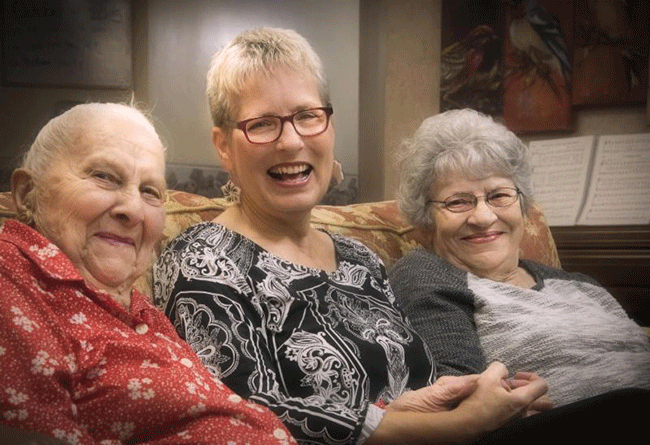
CLICK HERE FOR A BONUS VIDEO TIP!
Mary Sue Wilkinson, Founder of Singing Heart to Heart and the author of Songs You Know By Heart: A Simple Guide for Using Music in Dementia Care
Here’s something I truly believe. Everyone can sing. It’s as basic as walking and talking. I’ve heard people say they can’t sing. But time after time when people hear a familiar song from their youth, almost everyone will join in.
In dementia care, singing together is a gift we can use to connect, awaken memories and bring joy.
I often hear “I play music in the background all day. Isn’t that enough?”
My simple answer? “No!”
It’s not wrong — it’s just not enough.
Why?
Because music can be such a powerful tool to engage people living with dementia.
Connecting through music gives us a way to maintain relationships when other communication is difficult. It’s a pathway to emotional memories, helping us remember happy times. Music affects our mood and can lift our spirits. Can it be entertaining? Yes. But it can be so much more.
Here are six easy steps to harness the power of music — taking it from entertainment to engagement.
- Invite, don’t ask. Use phrases such as “Let’s sing!” or “It’s time to sing!” or Let’s have some music!”
- Begin with an upbeat song. Sometimes getting started is the hardest part. A lively song sets the stage. It’s a good idea to vary the pace with one or two slower songs as you go along, but overall keep a singing session upbeat.
- What’s the name of the song? Everyone likes to know what’s coming next. Begin with “How about we sing ________?” You can also sing the first words of a song and encourage people to finish the line. This is great fun and makes people with memory loss feel competent. It also gets them ready for what’s next. For example: “My Bonnie Lies Over the ______.” When they answer, be supportive with comments such as, “I knew you’d know this song!”
- Sing along! Whenever possible, join in. Your participation is important. Singing together helps people feel like they belong and this is where the connection takes place.
- Use movement on the first song. Adding movement right away gets things going and wakes everyone up. It can be as simple as patting knees or tapping toes.
- Be positive! Encourage with comments such as, “We sound great today!” Add an enthusiastic thumbs-up gesture along with your great big smile.
So there you have it. Singing together may be one of the most powerful ways that you and your loved one, or the person you are caring for connect. Strike up a song, or turn on the music and get ready for some joy.
Note: This article first appeared on the Together In This website as a bonus for participants in Mary Sue’s webinar: How to Ensure Success When Using Music in Dementia Care.
Learn more about Mary Sue’s work and find additional resources at www.SingingHeartToHeart.com.
Contact her at MarySue@SingingHeartToHeart.com


